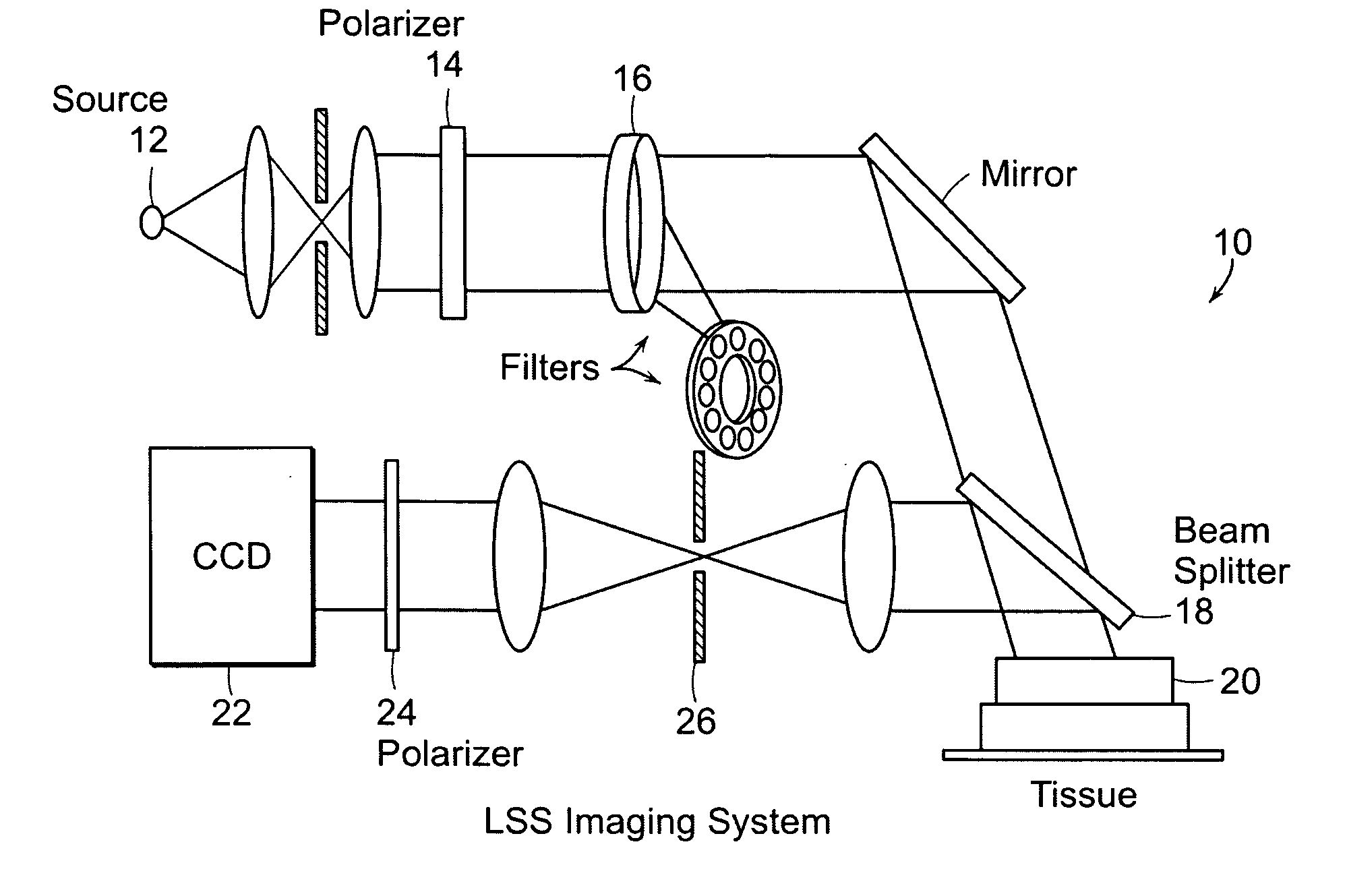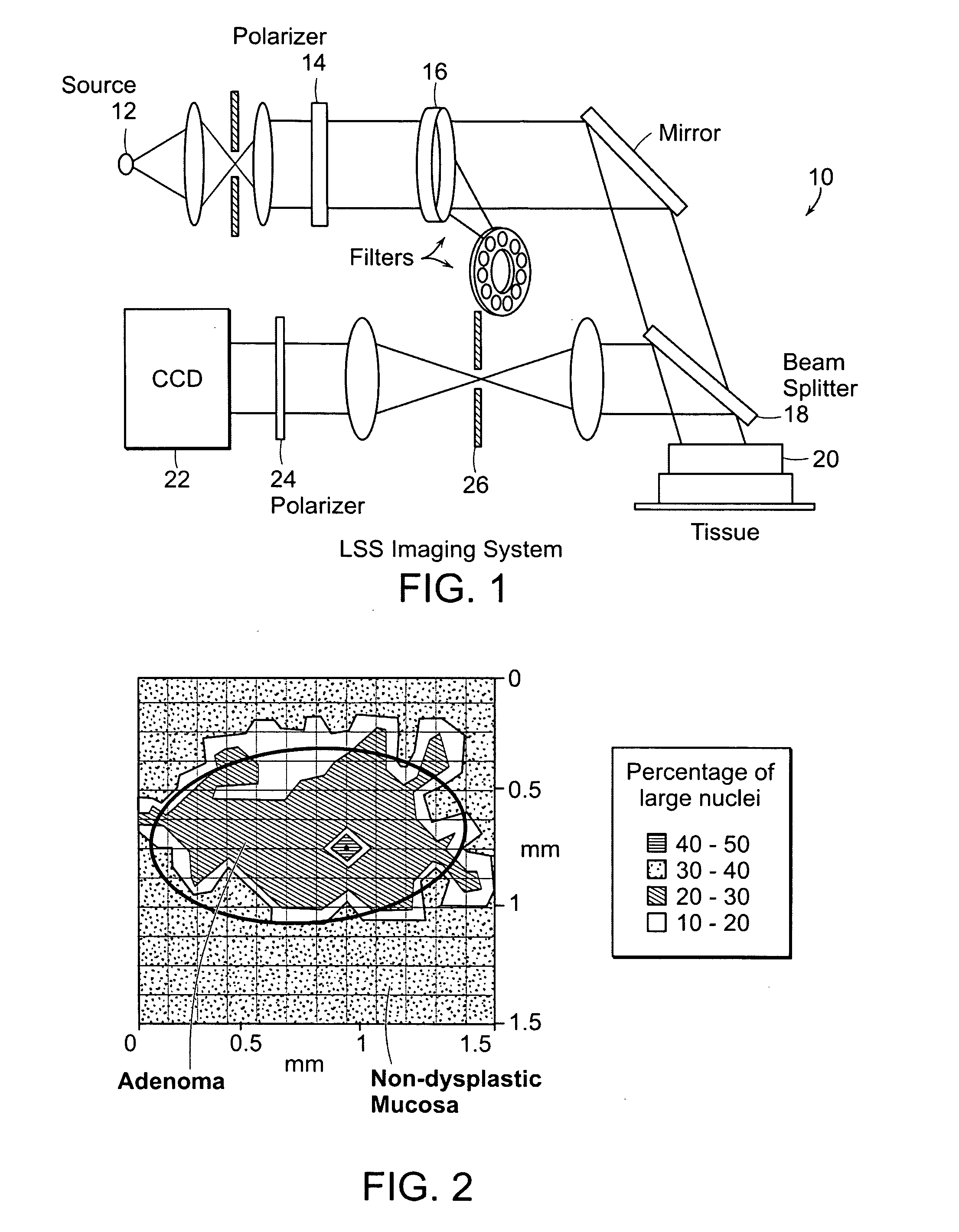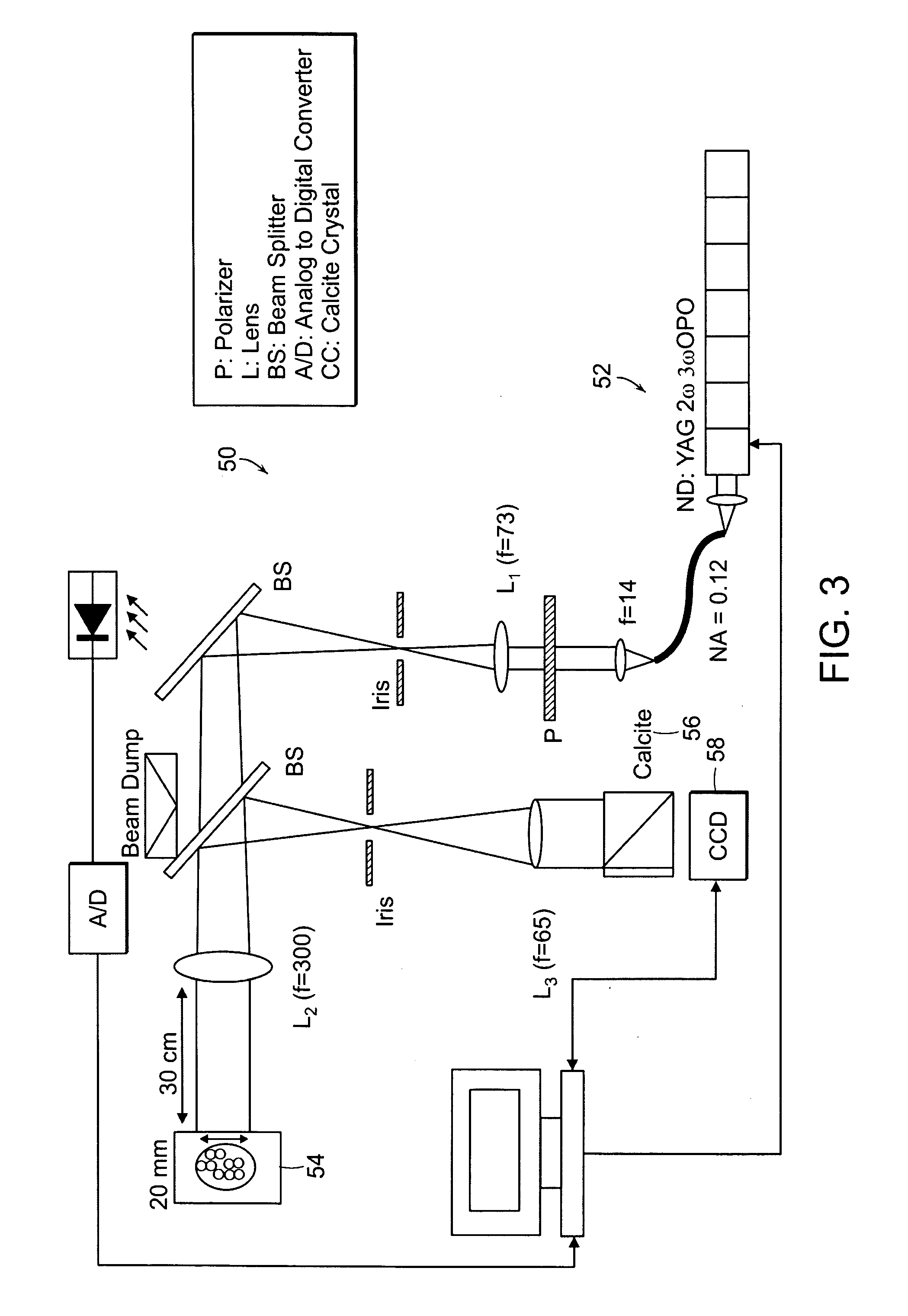Tri modal spectroscopic imaging
a spectroscopic imaging and tri-modal technology, applied in the field of tri-modal spectroscopic imaging, can solve the problem of making localized diagnosis more difficult, and achieve the effect of improving sensitivity and specificity of cancer diagnosis and speeding up speed
- Summary
- Abstract
- Description
- Claims
- Application Information
AI Technical Summary
Benefits of technology
Problems solved by technology
Method used
Image
Examples
Embodiment Construction
[0030] A spectroscopic imaging system in accordance with a preferred embodiment of the invention can be for precancer detection over a relatively large 1.3 cm by 1.3 cm area, for example. FIG. 1 depicts such a system 10. A 75 W xenon arc lamp light source 12 (Oriel, Inc.) illuminates the tissue 20. The light is collimated with half angle 0.5°, polarized 14, and transmitted through one of 11 narrow-band (4 nm) filters 16 (Edmund Scientific) to select the wavelength in the range 450-700 nm. The reflectance from the tissue is diverted by the beamsplitter 18 to a 4f imaging system 22 that images the illuminated surface of the sample 1:1 onto the CCD (Princeton Instruments, Inc.). The CCD consists of 512×512 pixel array with pixel size 25×25 microns. A polarizer 24 along the collection path selects the polarization state of the collected light. An iris 26 positioned at the center of the 4f lens system collects only light scattered into a solid angle corresponding to a half angle of 0.5°....
PUM
 Login to View More
Login to View More Abstract
Description
Claims
Application Information
 Login to View More
Login to View More - R&D
- Intellectual Property
- Life Sciences
- Materials
- Tech Scout
- Unparalleled Data Quality
- Higher Quality Content
- 60% Fewer Hallucinations
Browse by: Latest US Patents, China's latest patents, Technical Efficacy Thesaurus, Application Domain, Technology Topic, Popular Technical Reports.
© 2025 PatSnap. All rights reserved.Legal|Privacy policy|Modern Slavery Act Transparency Statement|Sitemap|About US| Contact US: help@patsnap.com



